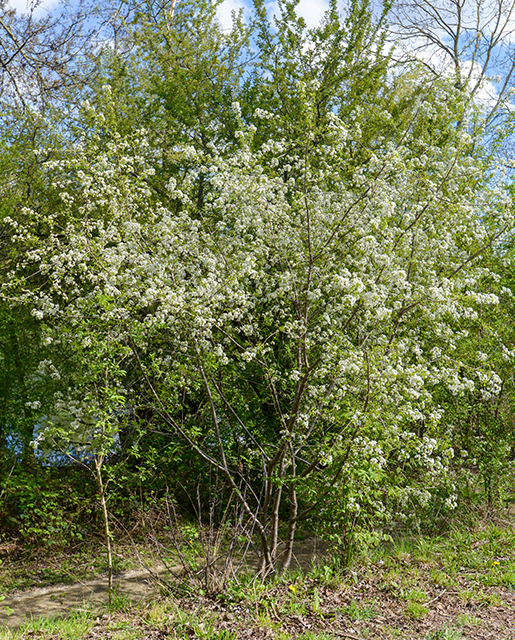Prunus avium
Sweet cherry is a flowering tree native to Europe and western Asia, known for its springtime blooms and vibrant fruits that emerge in late summer and fall.
Location
You can find the sweet cherry tree just off Magnolia Trail near the remains of the foundation of Obadiah Hadwen’s house.


History at Hadwen
The origin of the sweet cherry at the Hadwen Arboretum is a mystery. No records contain mention of the sweet cherry until 2020. Despite this, the one specimen present in the arboretum is mature and well-established. Although Hadwen did not record planting sweet cherry, he did cultivate at least three species of cherry including black cherry (Prunus serotina), chokecherry (Prunus virginiana), and pin cherry (Prunus pensylvanica).
Keep Learning
Detailed Species Information
Sweet cherry, also known as wild cherry, is a deciduous tree in the family Rosaceae native to Europe and western Asia. Introduced to North America in the 1920s and Australia in the late 1800s, the sweet cherry is widely cultivated as an ornamental and considered to be naturalized in the wild. Typically a fast-growing and short-lived tree, the sweet cherry reaches 30–60 feet (9–18 meters) in height. The bark is smooth and shiny when young and becomes rougher and more fissured with age. Both the young and mature bark feature the horizontal lenticels characteristic of many cherry trees. The oval-shaped leaves are simple, serrated, and alternately arranged on the stem. The leaves are dark green with pink stems and turn vibrant shades of color during the fall. The white, five-petaled flowers emerge in early spring and develop into dark red or purple edible drupes with a sweet but highly astringent taste. It should be noted that all parts of the sweet cherry are slightly toxic except for the fruit when ripe.
The sweet cherry prefers rich, moist but well-drained soils and is sensitive to compacted soils, drought, and waterlogging. In the wild, it can be found in the partial shade of forest edges and open woodlands. The fruit of the sweet cherry is a favorite of many insects, birds, and mammals. The wood of the sweet cherry is reddish-brown in color, making it a popular choice for instruments and woodworking. The wood is also used for smoking meats due to its fragrance and flavor. Because of its striking spring blossoms, the sweet cherry is cultivated for use as an ornamental in streets, parks, and gardens.
